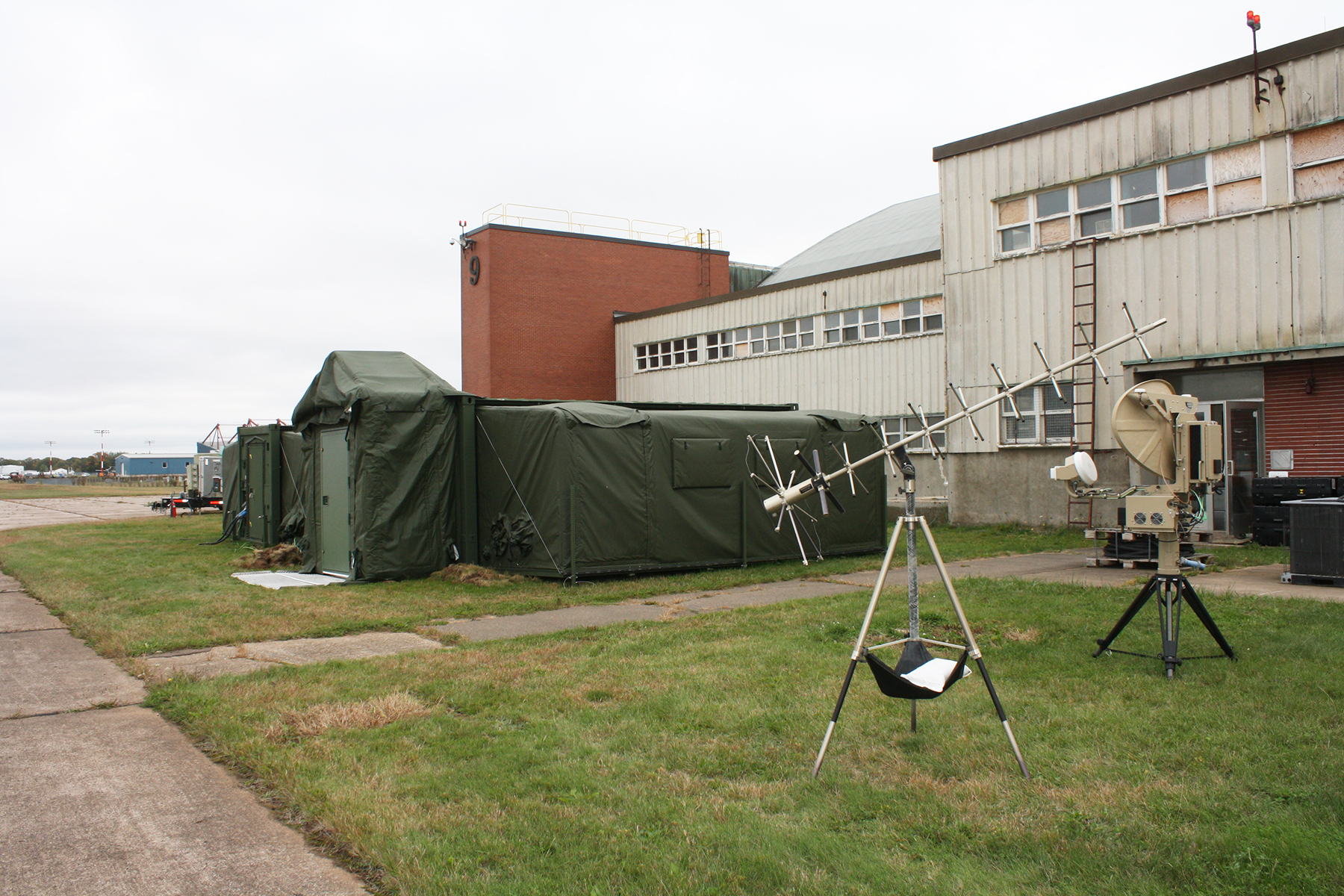
SARA WHITE, MANAGING EDITOR, THE AURORA
Anchor station provides all ops support from, basically, a tent
By Sara White,
Managing Editor, The Aurora
With “sand still in the cracks” from its most recent use in Kuwait, 14 Wing Greenwood’s Deployable Mission Support Centre (DMSC) is back on the ground, ready for the next round of at-home training.
At its simplest a tent, the DMSC becomes a high-tech office and communications hub for Canadian Armed Forces members on deployed operations. Yvon Lachance, 14 Operations Support Squadron’s tactical systems manager, hosted a tour of the DMSC on October 9, 2018, for wing officials.
“It’s a typical sea can,” Lachance says.
The top splits open lengthwise, with the sides folding down to become the tent’s solid floor. Heavy tarps make the walls and ceiling, the end is pre-built as a double-entry doorway, and interior packing puzzles out to provide interior heating and cooling systems, desks, work stations and stacks of technological computer drives. Antennae and both a 60-kilowatt generator and a 20-kilowatt back-up travel with the DMSC. All told: 17,000 pounds (7,711 kilograms) of gear or, grab and go even faster with just the computer stacks at 1,000 pounds (454 kilograms) on their own.
“A Herc or a C-17 takes it where we need to go,” says Lachance. “We’ve used this system for many, many years and it has served us well. We stay right with the airplanes on the airfield and offer direct support to the aircraft.”
14 Wing’s DMSC configuration includes two of the sea can units, connected as one complex with specially designed openings in the tarps. There are a couple ways to configure the set-up, but “wherever we set up, it’s always the same—whether it’s in Comox or here or in Kuwait. A desk, a box—everything is the same. Within 24 hours, wherever we go, we’re ready to go. Other forces start from scratch.”
The DMSC’s strict adherence to template—“we take a picture”—means technicians and operators trained to provide the operational support and essential communications for aircraft in theatre can do just that, with no hesitation; equipment is exactly where it’s supposed to be, every time, no matter where personnel were trained or where they are working.
“We do mission support: UHF, VHF and satellite radios, satellite communications, VOIP,” Lachance says. “We make our own cables and wires as we need them. We know what satellite we’re going to hit, where. We do bulk encryption, for everything in and out. We have multiple monitors and intelligent workstations. We have 100 terabytes of storage. We’re a beehive when it gets going: crowded, phones going crazy, radios, people looking for messages…. And,” he jokes, “we have the most popular piece of equipment on a deployment: the photocopier. Go figure!”
The DMSC takes all the intelligence, surveillance and reconnaissance information gathered by the CP-140 Aurora aircraft and “pushes it to whatever customer needs it, wherever in the world they are,” he says. “The guys in the places don’t have time to deal with IT: they need to do their jobs. We’re the anchor station.”
It takes about a year to train a Royal Canadian Air Force aerospace telecommunication and information systems technician; technicians start work in an operations centre, then they enter the DMSC environment. With the set-up now sitting alongside 14 Wing’s airfield, base aerospace telecommunication and information systems technicians will regularly work and train there for future deployments.






